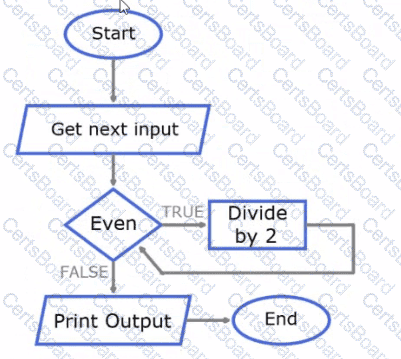A software developer creates a list of all objects and functions that will be used in a board game application and then begins to write the code for each object. Which two phases of the Agile approach are being carried out?
Given integer x = 12 and integer y = 4
What is the value of the expression x + y12?
Which phase of a Waterfall approach defines specifics on how to build a program?
What is the outcome for the given algorithm? Round to the nearest tenth, if necessary.

An example of an behavioral diagram is shown.

What is generally visualized with a behavioral diagram"?
A function should return 0 if a number, N is even and 1 if N is odd.
What should be the input to the function?
A function should determine the average of x and y. What should be the function's parameters and return value(s)?
Which term refers to a function that represents the number of fixed-size memory units used for an input of a given size?
A program adds a service fee to the total cost of concert tickets when the tickets are printed and mailed to customers. Another service fee is also added if the


